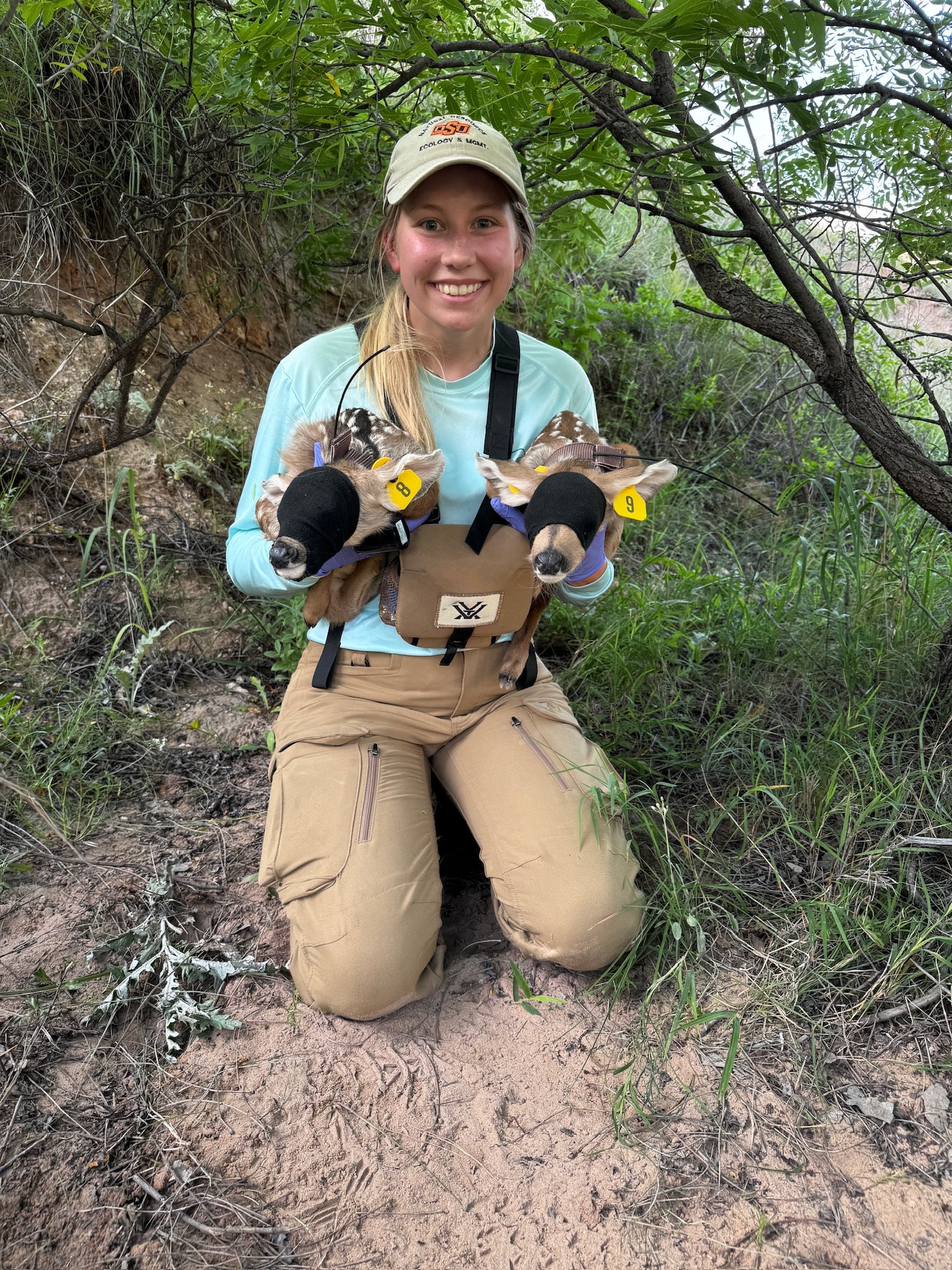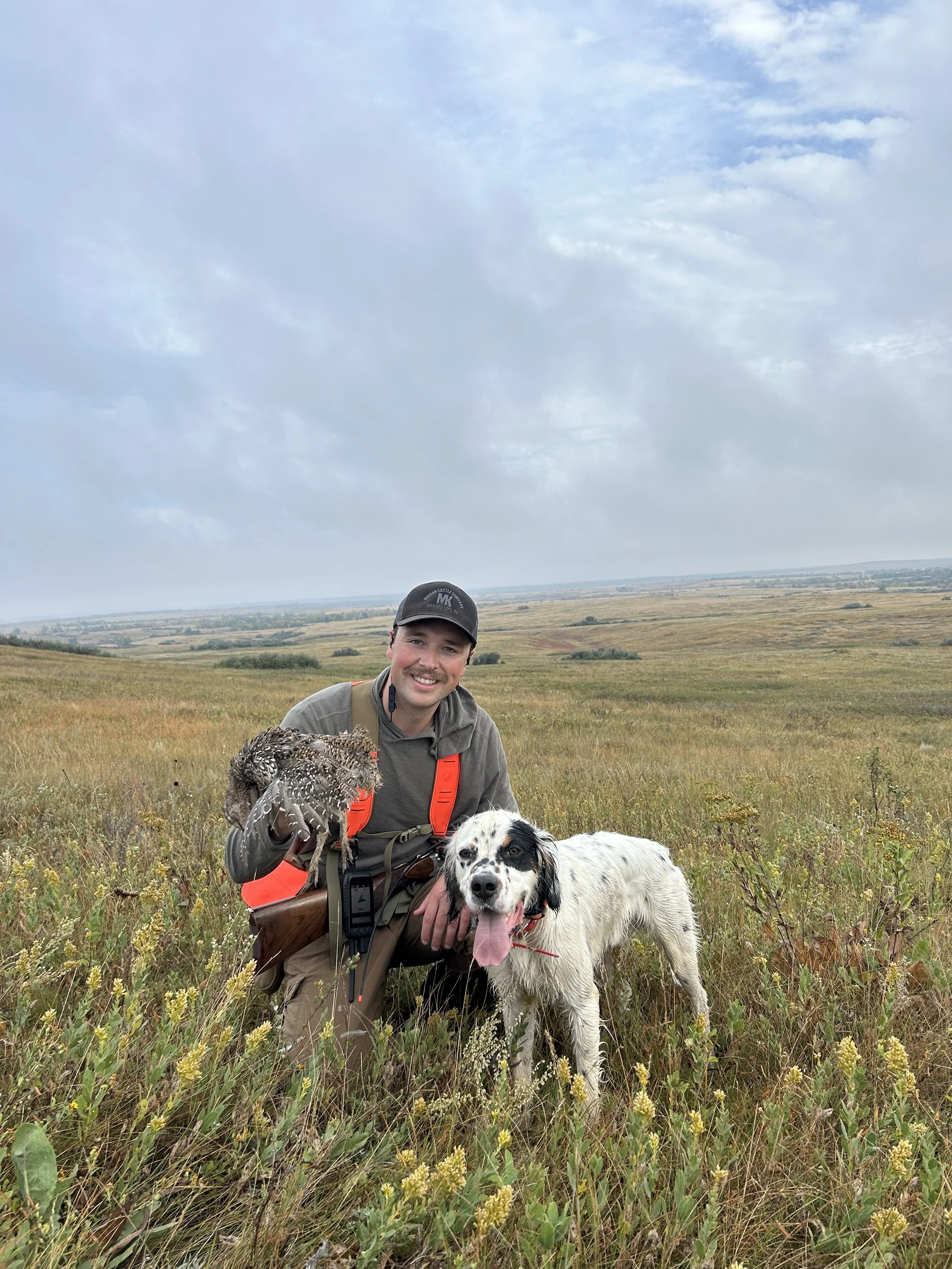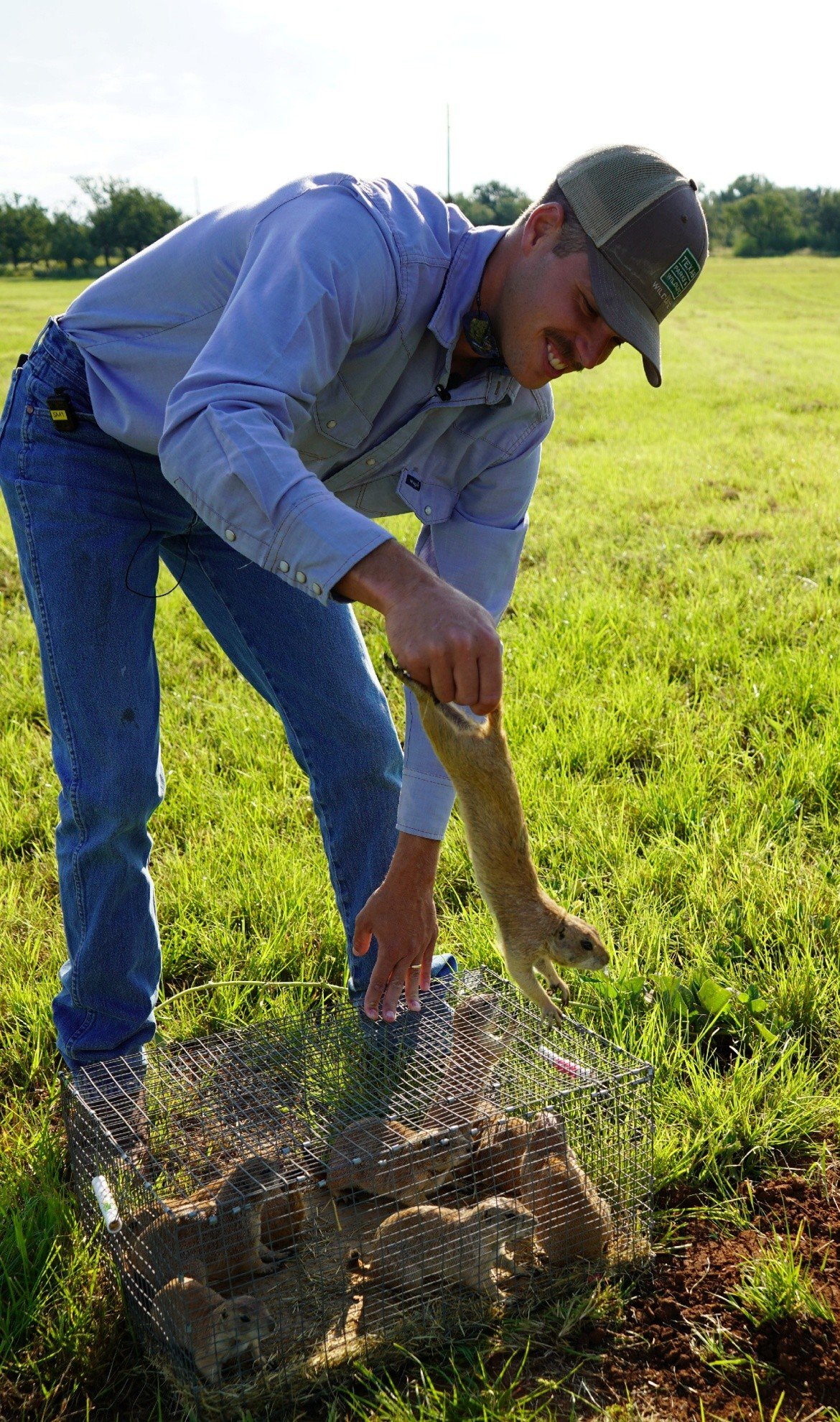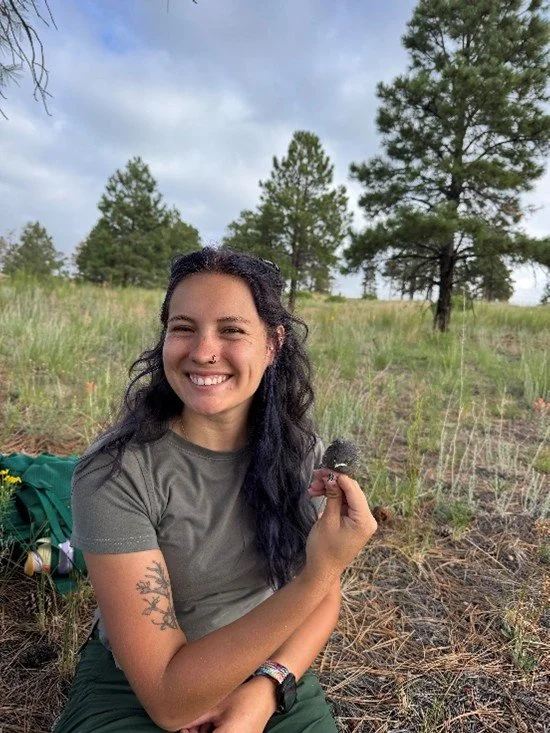Meet the Lab
PAST MEMBERS
Past Students
Catalina Berry
I was a Master’s student pursuing a degree in Agricultural and Natural Resource Sciences as part of Dr. Mathewson’s and Dr. Mitchell’s lab. I am broadly interested in wildlife ecology, but my greatest interest lies in the conservation, ecology, behavior, and human-wildlife interactions of songbirds and grassland birds. The goal of my thesis project was to use eBird data to create species distribution models for savannah sparrows in the Western Cross Timbers ecoregion and evaluate model performance. I had previously collected nonbreeding grassland bird and vegetation data at sites within the ecoregion to evaluate their response to grassland restoration and to validate the species distribution model. Before coming to Tarleton, I was previously employed as a Range Ecology Technician and Lead Quail Research Technician in South Texas with the East Foundation, then as a Piping Plover Technician in North Dakota with The Nature Conservancy in collaboration with USFWS. As part of the President’s Excellence in Research Scholars initiative at Tarleton, I led the Fishers Island Research and Study Team to assess the avian, arthropod, and vegetation community on a restored grassland in New England. After graduating, I plan to pursue a career in wildlife management with state, federal, or nonprofit agencies.
Alexander Hoxie
Alexander Hoxie was a master’s student in the Mathewson Lab. He worked as part of the house sparrow project in collaboration with North Dakota State University, Oklahoma State University, and the University of Kentucky. His thesis research focused on nonlethal methods for monitoring microplastics in house sparrows. As part of this project, he was always found either in the field measuring house sparrow nestlings or in the lab analyzing samples for microplastic contamination. His research provides important baseline data and inform future research on microplastics in songbirds. He was a Teaching Assistant in the Department of Wildlife and Natural Resources and served as a mentor for several undergraduate students.
His research interests are rooted in the conservation and restoration of birds and their habitats. In his future research, he hopes to utilize historical data and contemporary field studies to determine how the Texas bird community has changed over the last 150 years. He hopes to use this data to inform management decisions on public and private land across the state. He is an active member of The Wildlife Society, Texas Chapter of the Wildlife Society, the Association of Field Ornithologists, and the Texas Ornithological Society.
Alex is now a Ph.D. student in the Department of Rangeland, Wildlife, and Fisheries Management at Texas A&M University with Dr. Ashley Long.
Molly Koeck holding two mule deer fawns during data collection on her Ph.D. dissertation research.
View my publications here:
https://scholar.google.com/citations?user=haUk_s4AAAAJ&hl=en
Years in lab: 2015-2017
Hometown: Fremont, Nebraska
Contact: jordan.giese@tamuk.edu
John and his English Setter, Cona, on a grouse hunt in North Dakota
Gracie Gold
My undergraduate research was looking at parental attentiveness of House Sparrows across varying temperatures. The study examined parental behaviors in free-living House sparrows across a latitudinal and temperature gradient from Texas, Oklahoma, Kentucky, and North Dakota populations. The purpose of the study is to better understand how temperature influences parental attentiveness in passerines during incubation, with implications for how birds could respond to climate change.
Gracie is now an environmental consultant with HDR.
Molly Koeck-Asala
As an undergraduate researcher in the Mathewson Lab, my work focused on assessing invertebrate and vegetative community responses to bison grazing disturbance at Caprock Canyons State Park. This study was initiated under Dr. Mathewson and me but ultimately developed into a multi-year project that facilitated the professional development of numerous undergraduate students. During my time at Tarleton, I served several years on the executive board of the Tarleton State University Student Chapter of The Wildlife Society, presented my research with Dr. Mathewson at state and national conferences, and assisted with several graduate research projects in the Mathewson Lab. After graduating from Tarleton in 2021 with a bachelor's degree in Wildlife, Sustainability, and Ecosystem Sciences, I continued to pursue my passion for research by earning a master’s degree from Oklahoma State University, where my thesis focused on using camera traps to estimate demographic parameters of unmarked white-tailed deer and wild turkey in a densely forested system. I graduated with my master’s degree in 2023 and am currently pursuing a Ph.D. at Oklahoma State University in the Chitwood Lab where I am studying survival, movement, and abundance of mule deer in western Oklahoma. My Ph.D. dissertation specifically focuses on the factors influencing mortality and movement of a mule deer population at the species’ range extent. Following the completion of my Ph.D., I plan to pursue a career in academia.
Jordan Giese
Jordan grew up in eastern Nebraska and completed his B.S. in Fisheries and Wildlife at the University of Nebraska-Lincoln. During his time at Tarleton, he worked on factors influencing nest survival of White-tipped Doves (Leptotila verreauxi) in the Lower Rio Grande Valley along the U.S.-Mexico border. After finishing his M.S., he completed his Ph.D. at Iowa State University where he investigated the impacts of prairie restoration on grassland birds and other wildlife. Jordan is currently an Assistant Professor of Research at the Caesar Kleberg Wildlife Research institute where his work is focused on waterbird habitat selection and energetics.
John Palarski
I began my M.S. research in Dr. Mathewson’s lab at Tarleton State University in 2018, where I studied how source population influences northern bobwhite survival, reproduction, and dispersal following translocation. This large, collaborative project with the Rolling Plains Quail Research Foundation gave me the opportunity to contribute to research with direct implications for future translocation efforts and bobwhite management. After earning my degree in 2021, I continued working as a quail biologist, first with the Rolling Plains Quail Research Foundation and later with Tall Timbers, where I focused on restoration and management of bobwhite across Texas and the southeastern U.S. In 2024, I joined the North Dakota Game and Fish Department, where I now serve as the Migratory Game Bird Management Supervisor. In this role, I oversee statewide surveys and monitoring programs, guide harvest management decisions, and collaborate with partners across the Central Flyway to ensure management strategies are rooted in sound science
Kelton Mote
I attended Tarleton State from the Fall of 2014 to the Fall of 2017. While there, I had the wonderful opportunity to work for Dr. Mathewson on an undergraduate research assistantship. My research ultimately led to a publication in The Southwestern Naturalist titled “Factors influencing nest survival of mourning doves in the Lower Rio Grande Valley, Texas”. In addition, I competed on the Wildlife Quiz Bowl team, coached by Dr. Mathewson, which won the state title in 2017.
After graduation, I attended Texas Tech University, where I obtained my master’s degree, which allowed me to conduct bobwhite quail research on the historic Four Sixes ranch. With my two degrees, I began working for the Texas Parks and Wildlife Department as a wildlife biologist on the Yoakum Dunes Wildlife Management Area. My work there primarily focused on restoring habitats for all native wildlife, including the endangered lesser prairie-chicken. As part of that goal, my work included reintroducing 6 black-tailed prairie dog colonies across state and private land with over 1,000 individuals translocated.
Today, I am a biologist at Mason Mountain WMA, where I continue to support the mission of conserving native flora and fauna of the Edwards Plateau Eco region.
Samantha Aguilar
During my time as an undergraduate researcher in the Mathewson Lab, my work focused on evaluating parental attentiveness in House Sparrows across varying temperatures. This work was conducted collaboratively with North Dakota State University, and the nest box network we developed has led to many additional projects, many of which are ongoing. While at Tarleton I served as a co-captain of the plant ID team, was an active member of the Tarleton State University Student Chapter of The Wildlife Society, presented at a national conference, and assisted many other graduate and undergraduate research projects in the Mathewson Lab. After graduating from Tarleton in 2022 with a bachelor's degree in Wildlife, Sustainability, and Ecosystem Sciences I worked as a wild turkey technician with the University of Georgia at the Savannah River Site before beginning my master’s degree at New Mexico State University. My master’s thesis is a collaboration with Los Alamos National Laboratory, and I am examining the drivers of long-term nest box use by western bluebirds and post-fledging ecology of western bluebirds. Following the completion of my master’s degree I plan to pursue a Ph.D.








